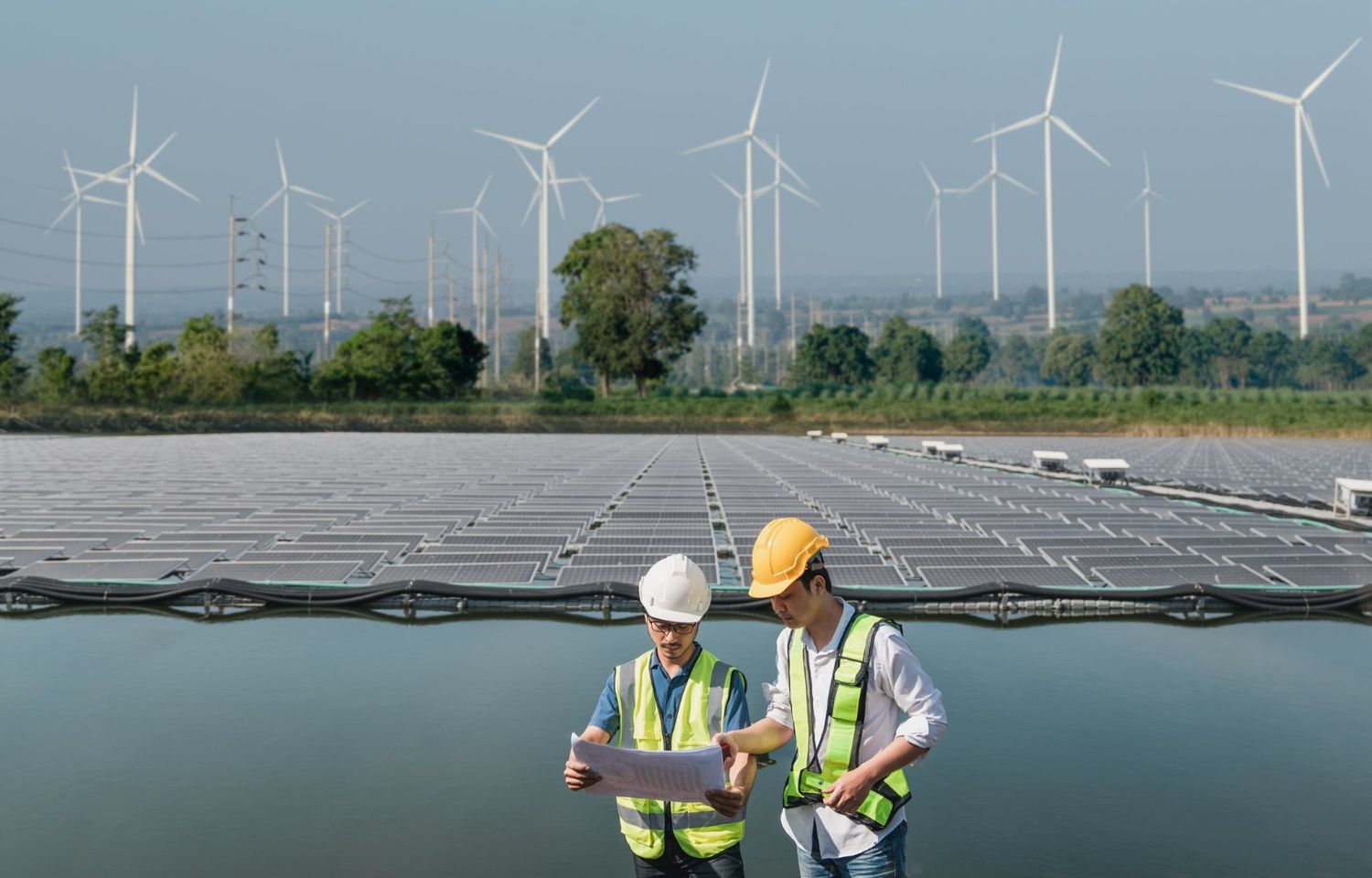Insights
Green Energy: Smart Ways to Invest
Dresyamaya Fiona
•
5 Minutes
read
•
Nov 11, 2025
The shift toward renewable energy has transformed global investment trends. Green energy opportunities include clean power stocks, green bonds, and ETFs that balance profitability with environmental impact.

What is Green Energy?
Green energy refers to power generated from natural sources that have minimal environmental impact and produce little to no greenhouse gas emissions. Unlike conventional fossil fuels such as coal or oil, green energy sources are sustainable and continuously replenished by nature.
Common examples include solar, wind, hydropower, geothermal, and biomass energy. These technologies help reduce carbon footprints, promote energy independence, and contribute to a cleaner, more resilient global economy.
Why Do We Need Green Energy?
The global demand for energy continues to rise, but traditional fossil fuels are depleting and remain the primary contributors to carbon emissions. Transitioning to green energy is essential for several reasons:
- Climate Change Mitigation: Green energy reduces greenhouse gas emissions, a major driver of global warming.
- Energy Security: Diversifying energy sources lowers dependence on imported fossil fuels.
- Economic Growth: The green energy industry creates millions of jobs in manufacturing, installation, and maintenance.
- Sustainability: Renewable resources such as sunlight and wind are inexhaustible compared to finite fossil reserves.
- Public Health: Cleaner air and reduced pollution improve overall health outcomes for communities worldwide.
Green energy is not just an environmental initiative but also a long-term economic and social necessity for sustainable global development.
Types of Green Energy
1. Solar Energy
Captured from sunlight through photovoltaic (PV) panels or concentrated solar power systems, solar energy is one of the most accessible forms of green energy for homes and industries alike.
2. Wind Energy
Generated by converting wind flow into electricity using turbines, wind energy is efficient for large-scale power generation, especially in coastal or open-land areas.
3. Hydropower
Produced by harnessing the energy of moving water through dams or rivers, hydropower remains one of the oldest and most stable green energy sources.
4. Geothermal Energy
This type of energy draws heat from beneath the Earth’s surface to generate electricity or provide direct heating solutions.
5. Biomass Energy
Biomass converts organic materials such as agricultural waste or wood chips into energy. It can reduce waste and contribute to carbon neutrality when managed sustainably.
Read also: Energy Commodities for Investors Guide
How to Invest in Green Energy?
Investing in green energy has become increasingly attractive as global markets shift toward sustainability. Here are several ways to participate:
1. Green Energy Stocks
Purchase shares of companies involved in solar, wind, or other clean-energy technologies. This approach offers exposure to industry leaders and innovators.
2. Exchange-Traded Funds (ETFs)
Green energy ETFs provide diversified exposure across multiple companies, reducing risk while maintaining sector focus.
3. Green Bonds
Issued by corporations or governments, green bonds fund environmentally friendly projects. They are suitable for investors seeking stable returns with impact.
4. Crowdfunding Platforms
Online investment platforms allow individuals to contribute to renewable energy projects globally, often with transparent impact reporting.
5. Commodity Futures and Carbon Credits
For advanced investors, futures linked to renewable energy commodities or carbon markets offer additional avenues for sustainable portfolio diversification.
Before investing, evaluate financial performance, policy incentives, and environmental credentials to ensure alignment with your long-term goals.
Difference Between Green Energy and Renewable Energy
Although the terms are often used interchangeably, there is a subtle distinction:
- Green Energy refers to energy sources that have zero or minimal environmental impact.
- Renewable Energy includes all sources that are naturally replenished, but not all are completely “green.”
For example, hydropower is renewable, but large dams can disrupt ecosystems, making them renewable but not always considered “green.” All green energy is renewable, but not all renewable energy is green. Understanding this difference is vital for investors and policymakers who aim to support sustainable projects with true environmental benefits.
Read also: What is Sustainable Investing in Global Markets?
Conclusion
Green energy represents the future of global power generation that is cleaner, smarter, and more sustainable. Understanding the types of green energy, recognizing the difference between green and renewable energy, and learning how to invest in green energy can empower individuals and institutions to contribute meaningfully to a low-carbon economy.





